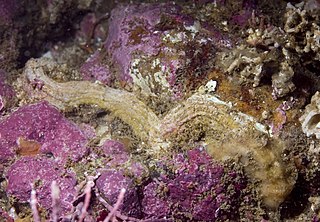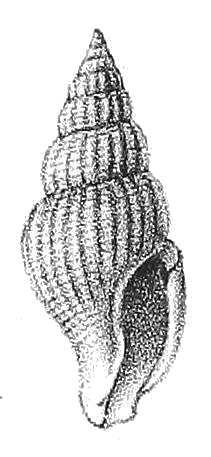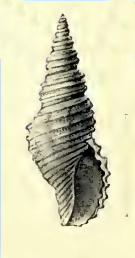
The Vermetidae, the worm snails or worm shells, are a taxonomic family of small to medium-sized sea snails, marine gastropod molluscs in the clade Littorinimorpha. The shells of species in the family Vermetidae are extremely irregular, and do not resemble the average snail shell, hence the common name "worm shells" or "worm snails".

Cerithiidae, common name the cerithiids or ceriths, is a large family of medium-sized marine gastropods in the clade Sorbeoconcha.

The Cerithioidea is a superfamily of marine, brackish water and freshwater gastropod containing more than 200 genera. The Cerithoidea are included unassigned in the subclass Caenogastropoda. The original name of this superfamily was Cerithiacea, in keeping with common superfamily endings at the time.

Crassispira tasconium is a species of sea snail, a marine gastropod mollusk in the family Pseudomelatomidae.

Paradrillia lithoria is a species of sea snail, a marine gastropod mollusk in the family Horaiclavidae, the turrids.

Diaugasma epicharta is a species of sea snail, a marine gastropod mollusk in the family Raphitomidae.

Daphnella evergestis is a species of sea snail, a marine gastropod mollusk in the family Raphitomidae.

Taranidaphne amphitrites is a species of sea snail, a marine gastropod mollusk in the family Raphitomidae.

Taranidaphne nereidum is a species of sea snail, a marine gastropod mollusk in the family Raphitomidae.

Procerithiidae is a taxonomic family of sea snails in the subclass Caenogastropoda. As currently defined, it is extinct, although it has been suggested to include the extant genus Argyropeza.
Argyropeza divina is a species of sea snail in the family Cerithiidae. It occurs in the Indian Ocean and in the western Pacific Ocean.
Argyropeza schepmaniana is a species of sea snail in the family Cerithiidae. It occurs in the Indian and the western Pacific Oceans.
Argyropeza verecunda is a species of sea snail in the family Cerithiidae. It occurs in the Indian and the western Pacific Oceans.

Finella pupoides is a species of small sea snail, a marine gastropod mollusk in the family Scaliolidae.
Obtortionidae is a family of sea snails, marine gastropod molluscs in the superfamily Cerithioidea, that is within the clade Cerithimorpha or in clade Sorbeoconcha.

Anacithara is a genus of sea snails, marine gastropod mollusks in the family Horaiclavidae.

Daphnella thia is a species of sea snail, a marine gastropod mollusk in the family Raphitomidae.

Daphnella xylois is a species of sea snail, a marine gastropod mollusc in the family Raphitomidae.

Clathurina receptoria is a species of sea snail, a marine gastropod mollusk in the family Raphitomidae.

Daphnella veneris is a species of sea snail, a marine gastropod mollusk in the family Raphitomidae.















